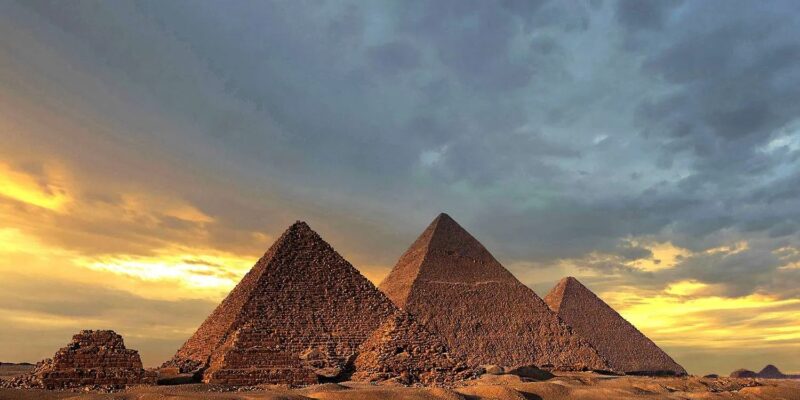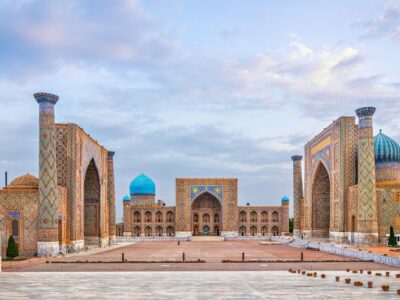
Introduction
The Great Pyramids of Giza, located on the outskirts of Cairo, Egypt, stand as enduring symbols of ancient Egyptian grandeur and architectural prowess. As the only surviving wonder of the Seven Wonders of the Ancient World, these pyramids have captivated the interest of scholars, tourists, and historians for centuries. Representing the pinnacle of ancient Egyptian construction and cultural accomplishments, they remain shrouded in mystery and continue to inspire awe. This article explores their historical context, architectural features, cultural significance, and their relevance in the modern world.
Historical Context
Origins and Construction
The Great Pyramids were constructed during Egypt’s Fourth Dynasty in the Old Kingdom (circa 2,500 BCE), a period noted for its cultural and architectural achievements. These monumental tombs were built for Pharaohs Khufu, Khafre, and Menkaure, establishing Giza as a prominent necropolis for royalty.
The Pharaohs
- Khufu: The second pharaoh of the Fourth Dynasty, Khufu, commissioned the largest pyramid, known as the Great Pyramid, a massive project symbolizing his power.
- Khafre: Khufu’s successor, Khafre, built the second pyramid, slightly smaller but elevated on higher ground, accompanied by the Great Sphinx guarding the complex.
- Menkaure: The third pyramid, built by Menkaure, is smaller in scale, reflecting possible economic changes or shifts in religious attitudes.
Architectural Marvel
The construction of the pyramids, particularly Khufu’s Great Pyramid, continues to intrigue scholars and engineers. These structures are celebrated for their precise alignment and the massive size of their stone blocks.
Construction Techniques
Ancient builders used limestone and granite blocks, transported from quarries using sledges and boats. The pyramids’ precise alignment with cardinal points and the accuracy of their bases, often within inches, are remarkable feats of engineering.
Innovations
Theories about construction methods include the use of straight, zigzagging, or circular ramps to transport the heavy stones, showcasing the sophisticated engineering techniques of the time.
Main Pyramids and Their Features
Each pyramid at Giza has distinct characteristics worth exploring:
- Pyramid of Khufu: Originally standing at about 481 feet, it was the tallest man-made structure for over 3,800 years. Its internal chambers, including the King’s Chamber and the Grand Gallery, highlight advanced architectural and astronomical knowledge.
- Pyramid of Khafre: This complex includes the pyramid and the Great Sphinx, a monumental statue with a lion’s body and a pharaoh’s head, likely representing Khafre. Some original casing stones remain at its apex, hinting at its original appearance.
- Pyramid of Menkaure: The smallest of the three, it features a complex of three smaller queen’s pyramids and several mortuary temples, showcasing evolving building techniques with both red granite and limestone.
Cultural Significance
The pyramids served not only as tombs but also as statements of the pharaohs’ divine right to rule. Their construction aimed to ensure the pharaohs’ immortality and acted as focal points for religious rituals. Alignments with stars, particularly the Orion constellation, underscored their cosmological importance, linking the pharaohs with the divine.
Modern Day Relevance and Tourism
Today, the Great Pyramids of Giza are a major tourist attraction, drawing millions of visitors annually and significantly contributing to Egypt’s tourism industry.
Visitor Information
The best time to visit is from October to April, during cooler months. Early morning tours are advisable to avoid heat and crowds. Comprehensive tour options include guides and camel rides around the site.
Preservation Efforts and Challenges
Preserving these ancient structures amid environmental threats and human activity is an ongoing challenge. The Egyptian government, along with international organizations, employs modern technology, such as 3D modeling and drones, to monitor and maintain these historical sites.
Conclusion
The Great Pyramids of Giza remain one of the world’s most enduring mysteries and masterpieces. They continue to exemplify human ingenuity and inspire awe across the ages. As stewards of this ancient heritage, it is our duty to ensure their preservation for future generations, maintaining their status as icons of ancient Egypt and symbols of human achievement globally.
Visit Egypt is the official travel and tourism website for Egypt, offering comprehensive information and resources for planning trips to this historic and culturally rich country. It features detailed guides on must-visit destinations, exclusive tour packages, and insights into Egypt’s ancient ruins, vibrant cities, and stunning natural landscapes. Visitors can explore curated itineraries, book tours, and access practical travel tips to ensure a memorable and enriching experience in Egypt.











